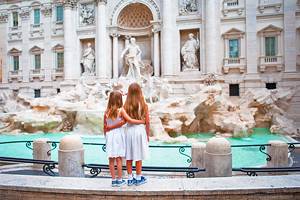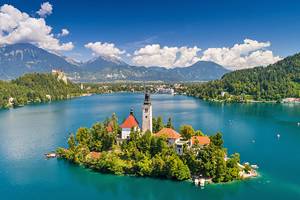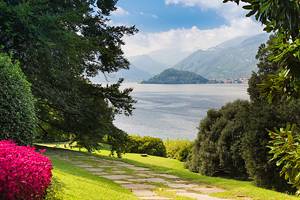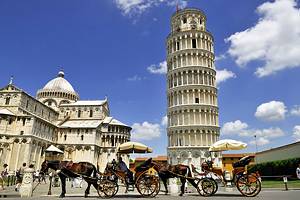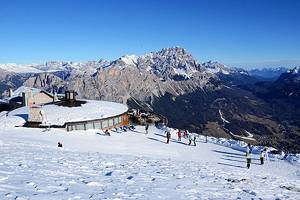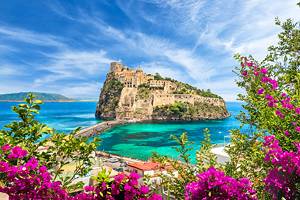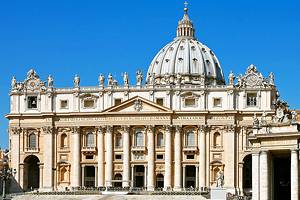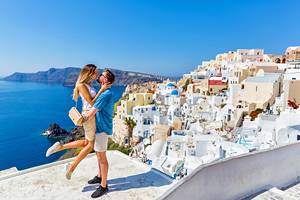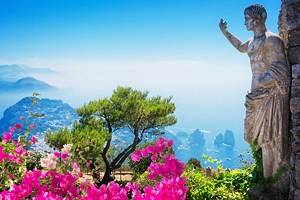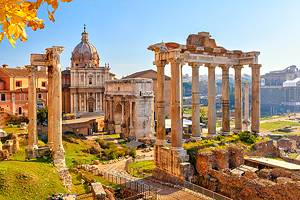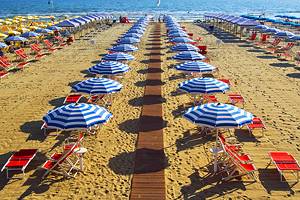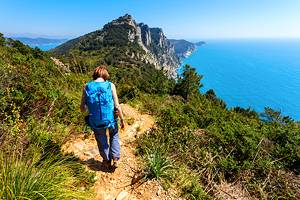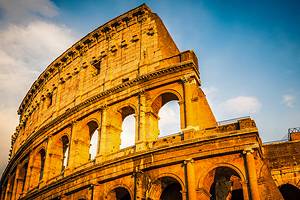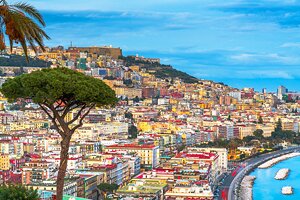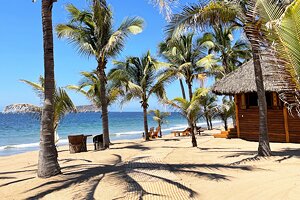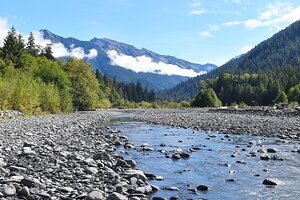13 Best Lakes in Italy
More than 1,500 lakes dot Italy's landscape, from the Alpine pools and three major lakes in the north to Calabria's sole natural lake, at an altitude of 1,040 meters in the foothills of the Catena Costiera. The northern lakes always get top billing, winning by the numbers: Como the deepest at 410 meters, and Garda the biggest, with a surface area of 370 square kilometers. Maggiore is the second largest, with its northern waters flowing over into the Ticino region of Switzerland.
Nearly all these lakes are centers for water sports: swimming, sailing, windsurfing, fishing, canoeing, kayaking, water skiing, even scuba diving, and are popular vacation getaways for locals and tourists. Most have hotels and resorts overlooking them and in the nearby towns, and Lake Garda is known for the amusement parks along its southern shore.
It is easy to view Italy's lakes as playgrounds, but don't overlook the many top tourist attractions that line their shores – or the magnificent scenery that surrounds those in the north. Here, you'll find historic castles, grand palaces, Roman sites, Art Nouveau villas, medieval churches, and lush gardens to explore. At Lake Ledro, you can explore the remains of a prehistoric lake village.
Trails lead hikers to panoramic views and challenging via ferratas, while mountain cable cars lead to Alpine gardens. You can hop boats to islands, including Europe's largest lake island, and climb a UNESCO-acclaimed Sacra Monte – Sacred Mountain. In the south, Lake Bolsena, the largest volcanic lake in Europe, fills an ancient caldera and is a prime location for bird-watching.
Whether you choose the glamor of Lake Como, the playground of Garda, or the picture-perfect view from Lago Blu, with this handy list you can find plenty of things to see and do at the best lakes in Italy.
1. Lake Como
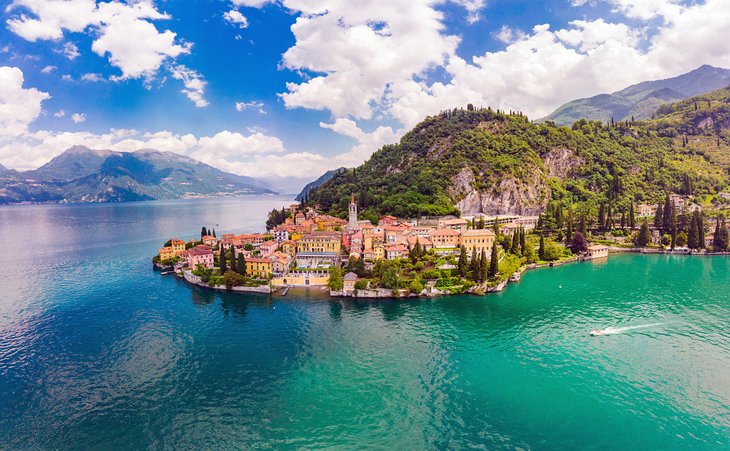
The cover-girl of Italian lakes, glamorous Como has been where the privileged come to play ever since Roman times, when Pliny built his villa on its eastern shore. More recently, it's Hollywood stars who choose it for their bolt hole. Long and narrow, Como divides into two arms at the south, giving it the shape of an inverted Y, with the chic and pretty town of Bellagio at the point in its center.
At the foot of the lake, and connected to Milan by train, the town of Como is a former Roman city whose prime attractions are a magnificent Romanesque cathedral and a cable car that ascends to views of the lake and snowcapped Alps beyond.
From Como, you can travel by boat either for a scenic lake tour or to reach its towns. Ferries shuttle back and forth between Bellagio, Tremezzo, and other towns, so it's easy to get around without a car.
The "lake effect" makes Como's shores a perfect climate for temperate and even semitropical plants: highlights are two lovely gardens in Bellagio; Villa Carlotta's gardens in Tremezzo; the terraced gardens of Villa Monastero in Varenna; and the Baroque Villa Balbianello on its garden-clad point, reached by boat from Lenno. These flower-studded landscapes backed by the lake and Alps top the list of the best places to visit on Lake Como.
Read More: Best Lakes in Europe
2. Lake Garda
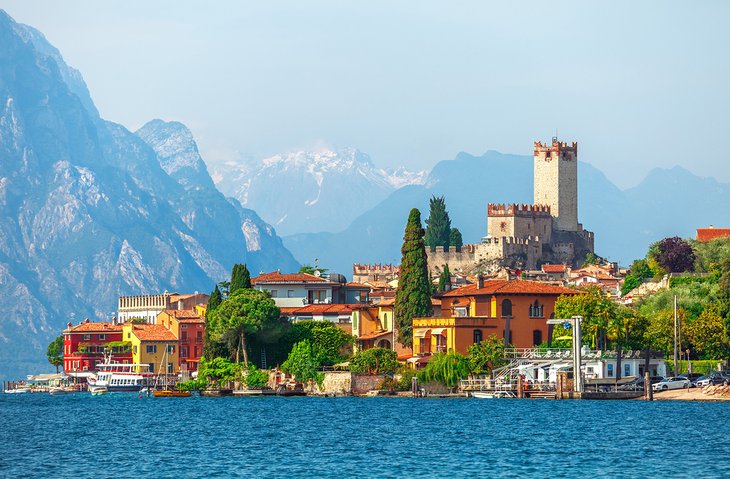
Although its northern reaches are just as beautiful as Lake Como, Garda is best known as the playground lake. You can find almost any freshwater sport here and at its northern end, Torbole offers some of the finest windsurfing and kitesurfing in Europe. The winds also mean the lake is a favorite for sailing, but its calmer southern waters are popular for kayaking.
Most of the best beaches are in the southern part of the lake, and the surrounding mountains have trails of various difficulties for hikers. Tourists who want the mountain views without the uphill climb can take the revolving cable car to the summit of Monte Baldo and walk the trails along the ridge, where there is a botanic garden of alpine plants.
Garda is a favorite place to visit for families because of its relaxed vibe, shallow beaches, abundant family-friendly resorts and campgrounds, and its well-loved theme parks. The most famous of these are Gardaland, Gardaland Sea-Life, and Caneva World, with its movie-themed attractions.
Kids also love the castle at Sirmione, a little town at the far end of a long peninsula on the southern shore. Sirmione has extensive remains of an elaborate Roman spa and resort; its many little shops and boutiques make it a popular place to go shopping.
3. Lake Maggiore
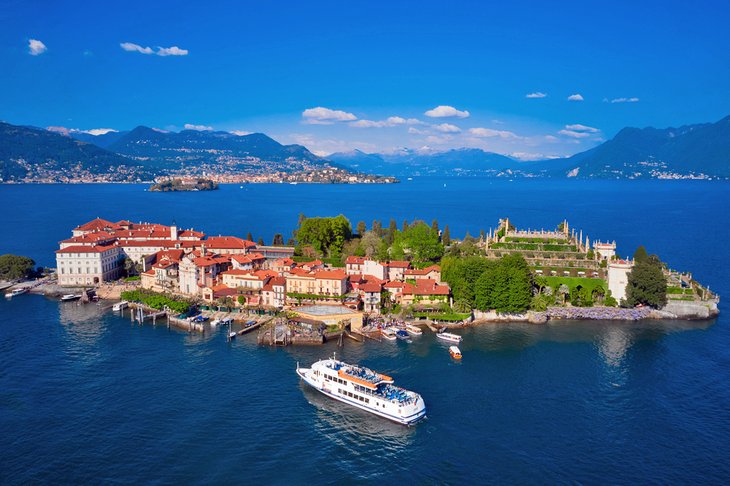
The second largest of Italy's lakes, Maggiore is shared with Switzerland, and the northernmost towns of Ascona and Locarno are in the Swiss Ticino region. But the greater part of the lake, where Maggiore's top things to do are located, is in Italy. Towns along its western shore are on a direct train line from Milan, and the lower end of the lake is only a few kilometers from Malpensa airport.
Most of the major places to see are on the western shore, where you'll find the lovely subtropical gardens and park of Villa Taranto and Villa Pallavicino. The latter has botanical and show gardens and a zoo with exotic animals, making it one of the favorite things to do on Lake Maggiore for families.
Stylish Stresa is a popular base, and from here boats take tourists to the three Borromean Islands. Although each of the islands has its appeal, the major attraction is Rocca Borromeo, the over-the-top palace on Isola Bella. Its grand salons and galleries, their sumptuous decorative flourishes encrusted with gold, cover most of the island, but the highlight of a tour is the even more elaborate formal garden that rises tier after tier above the lake.
Maggiore has fewer beaches than Lake Garda, but you can rent canoes and kayaks at several towns. For the best views, take a cruise on one of the lake steamers to see Angera Castle, lakeside villas, and the ever-changing mountains to the north.
4. Lake Orta
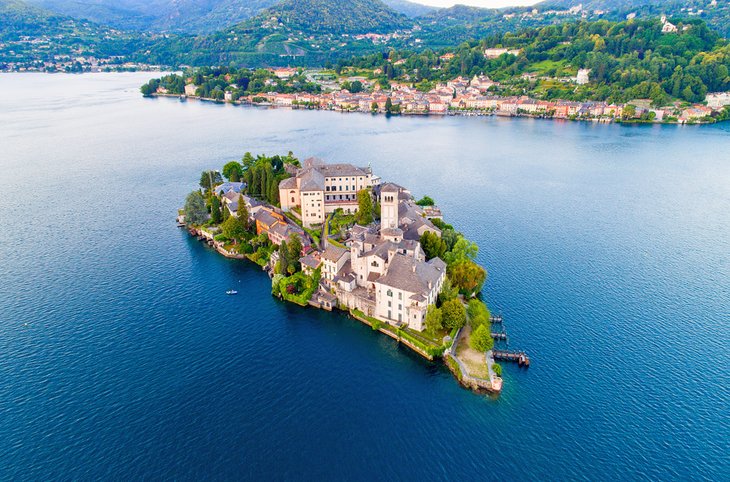
By far Italy's most romantic lake, Orta is usually overlooked, even though it is only a few minutes' drive from Lake Maggiore. Tucked into a valley under the wooded western slopes of Monte Mottarone, little Lake Orta has a single tiny island, Isola San Giulio, reached by boat from the town of Orta San Guilio.
Almost the entire surface of the island is covered in the stone buildings of a convent and the 12th-century Basilica di San Giulio, said to have been built by the saint himself. Highlights of the church are its intricately carved marble pulpit and the frescoes. The Way of Silence wends among the old buildings and under the walls of the convent.
Orta San Giulio spreads along the lakeshore and climbs the hillside on charming medieval lanes. Small shops line its narrow main street and Piazza Motta, where you can board a boat to the island.
Above the town, paths wind among the chapels of the Sacra Monte, one of nine such hillside sanctuaries that are unique to this region. Twenty chapels house terra-cotta figures that show events in the life of St. Francis of Assisi.
5. Lake Lugano
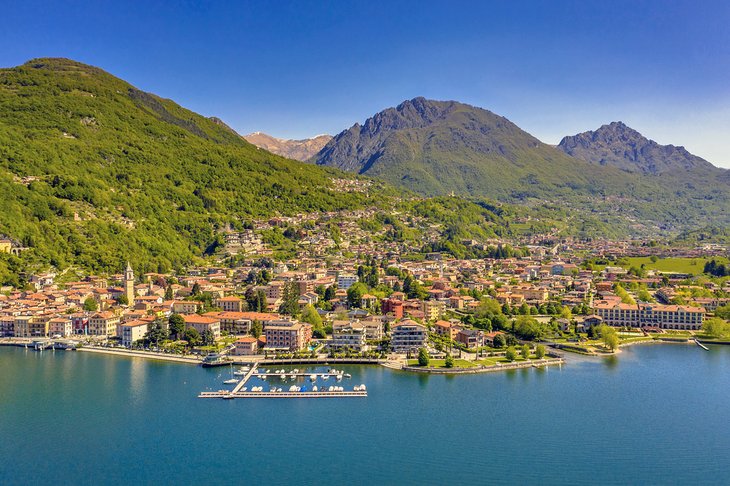
By quirks of history and geography, both ends of Lake Lugano - and a small isolated piece near the center - are in Italy; the rest is in the Italian-speaking Ticino region of Switzerland. Apart from the few villages that cling to its shore, the only major towns are Lugano in Switzerland and Porlezza at the far eastern end in Italy. Elsewhere, the shores are rugged, vertical, and thickly forested, giving the lake a serene, wild feeling enhanced by the mountains that form a majestic backdrop.
To reach Lake Lugano from Italy, drive the short distance from Menaggio to Porlezza at the Italian end of the lake, or for a real adventure, take the series of roads over the mountains from Argegno, on Lake Como, to Osteno on Lake Lugano. From here, a road hugs the lakeshore to Porlezza, so you don't have to backtrack. Along the shore, you'll pass the caves of Grotte di Rescia.
Porlezza is known for its swimming beach and good choice of campgrounds, which make it a popular place to go for families. In Cima, near Porlezza, you can rent boats to explore the lake on your own, or you can tour the lake on one of the popular steamers from Lugano.
6. Lake Iseo
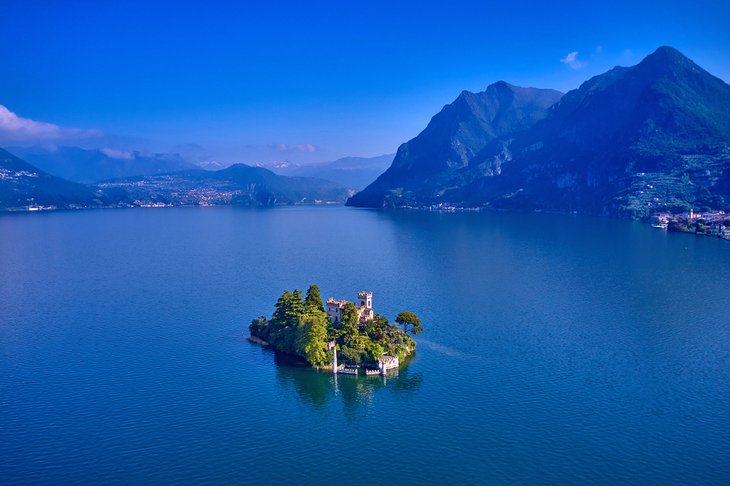
Like Lake Orta, Iseo is often overlooked, lying between and overshadowed by the larger better-known lakes of Garda and Como. Iseo is surrounded by mountains, and is especially popular for water sports, including sailing, canoeing, kayaking, wakeboarding, kitesurfing, windsurfing, and paragliding.
Low-key lakeside towns provide tourist facilities and attractions that include a small castle and 12th-century Romanesque church in the little port of Iseo. Near the town of Sulzano is the Alpine lake's only island, which rises steeply in the forested slopes of Monte Isola. At its summit, at an altitude of over 600 meters, is the pilgrimage church of the Madonna della Ceriola. A ferry from Sulzano lands you at the tiny island fishing village of Peschiera Maraglio.
In 2016, The Floating Piers installation allowed people to walk on the water, and plans are underway for a new installation called Your World, by contemporary artist Lorenzo Quinn, in Sulzano on the eastern shore. It will feature two enormous hands emerging from the water and supporting the Earth, with all five continents in green to represent forests. Like the 2016 work, it will include floating walkways.
7. Pragser Wildsee (Lago di Braies)
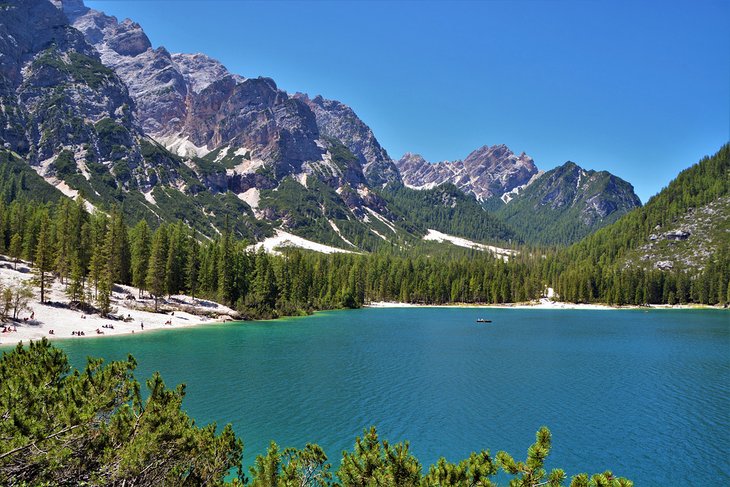
Surrounded by peaks of the Dolomites in Italy's German-speaking South Tyrol, Pragser Wildsee, or Lago di Braies in Italian, was formed when a landslide from the neighboring Herrstein created a dam. The intense blue and emerald waters surrounded by dense green forest and jagged mountain peaks is an unforgettable sight at any time of year. This and the tiny lakeside chapel on the shore reflecting in its waters makes it one of the most photographed spots in the Dolomites.
Adding to its visual appeal, Pragser Wildsee is a starting point for hikers, at the foot of the 2,800-meter Croda del Becco and the trails in the Fanes-Senes-Braies Nature Park. A trail around the lakeshore is largely level and wide on the west side, narrow and steeper on the east. Or follow the beginning of the trail to the Seekofel, a beautiful walk through the mountain scenery.
You can also rent boats to discover more views from the water. In the winter, you may find a curling contest in progress on the ice.
8. Lake Bolsena
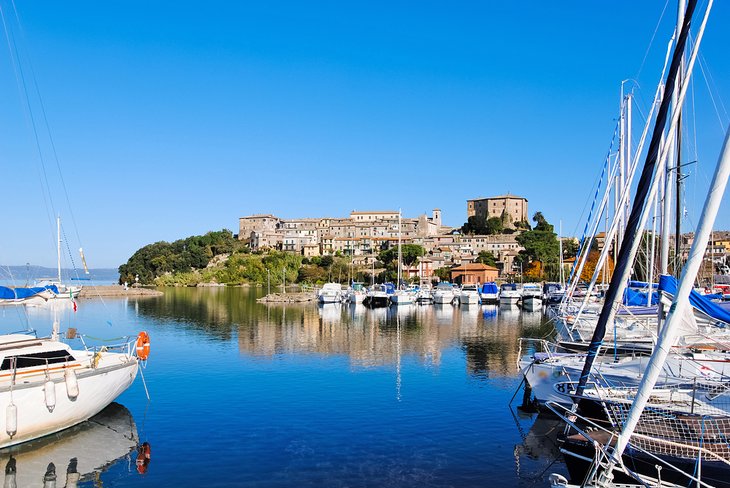
North of Rome, and Europe's largest volcanic lake, Bolsena was formed in the caldera created by the collapse of a volcano 370,000 years ago. Later underwater eruptions created the lake's two islands, Bisentina and Martana, but the volcano has been dormant since the Romans recorded activity in 104 BC. These volcanic origins account for the soft black sand that forms the lake's long beaches.
The beaches and opportunities for kayaking, canoeing, windsurfing, fishing, water skiing, paragliding, and sailing bring locals and tourists, who also find campgrounds, B&Bs, and agritourism lodgings. You can rent canoes and sailboats or take a sailing cruise at various places around the lake.
Bolsena is a favorite haunt of bird-watchers, who come here to observe more than a dozen species that fish in the waters and nest in the reeds along the shore. The island of Bisentina, the largest, is accessible by ferry from Capodimonte, and is worth a visit to see the gardens, oak groves, and 5th-century frescoes in the Cappella del Crocifisso.
9. Lake Bracciano
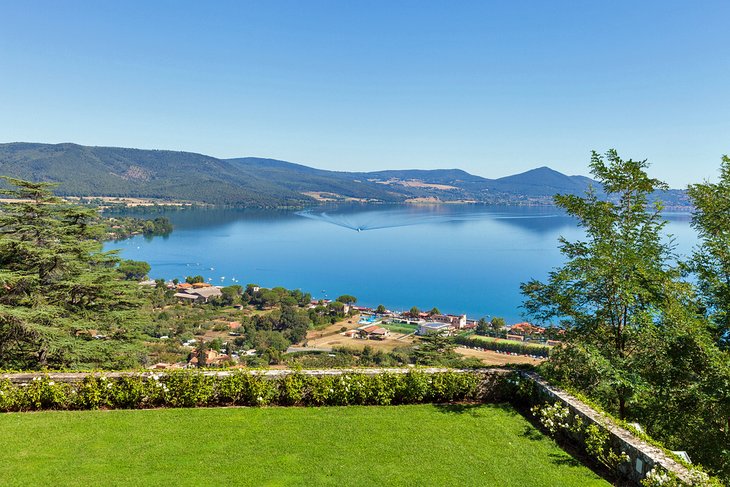
Only 32 kilometers from Rome, Lake Bracciano is also of volcanic origin, one of two lakes formed in craters of the same volcano. The other, Lake Martignano is smaller and almost perfectly round; together, they are part of the Bracciano-Martignano Natural Park, so motorized watercraft in either lake is limited to public ferries and authorized fishing boats. This makes Lake Bracciano especially good for kayaking, canoeing, sailing, windsurfing, fishing, and scuba diving, and for swimming in the clear, clean water.
The town of Bracciano, on a hill overlooking the lake, has attractions of its own, including the Renaissance Orsini-Odescalchi Castle, which houses a museum of medieval armor and weapons in addition to its furnished rooms. Around the castle, wander in the maze of narrow lanes and stairways that lead down to the lake
10. Lake Ledro
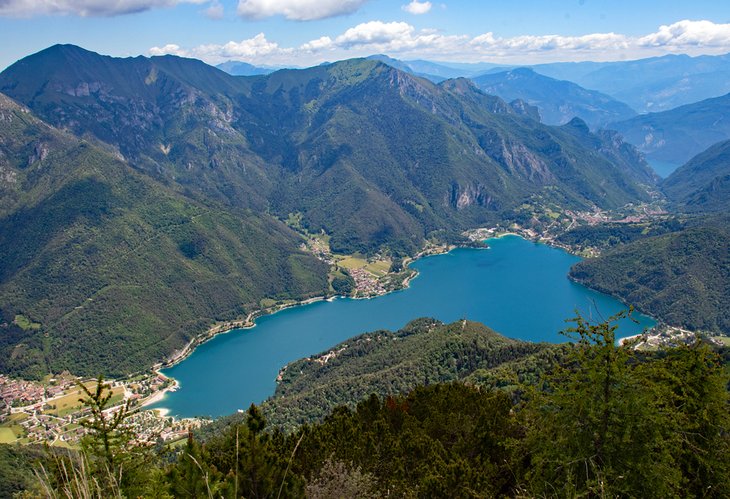
Not far west of Riva del Garda, at the northern tip of Lake Garda, is the small Alpine Lake Ledro, in a pristine landscape of forests and mountain peaks. The clear and almost iridescent blue-green waters are popular for swimming, canoeing, sailing, windsurfing, and fishing, and a 200-kilometer network of walking and hiking trails lead to Alpine heights and around the scenic lake.
For those interested in history, Lake Ledro has another attraction. When the water level of the lake receded during the building of a hydro-electric station at Riva del Garda in 1929, the pile dwellings of a village dating to the Bronze Age were revealed. In addition to the dwellings, a number of artifacts of daily life were found and preserved.
The village has been reconstructed, and the houses furnished with artifacts from the Bronze Age. The Museo delle Palafitte di Ledro (Ledro Pile Dwellings Museum), in Molina di Ledro, is the most important pile-dwelling site in Europe and a UNESCO World Heritage Site. Workshops and activities make this a popular place for families.
11. Lago Blu
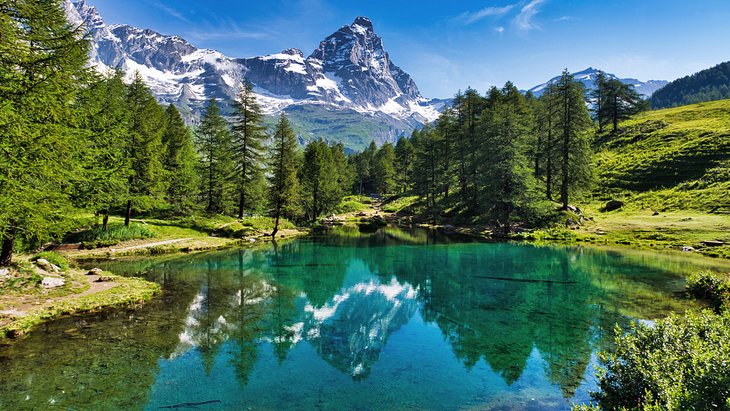
No list of Italy's lakes would be complete without mentioning the iconic view across tiny Lago Blu, in the Val d'Aosta region. Alongside the road leading from Valtournenche to the ski resort town of Breuil Cervinia, the glassy surface of Lago Blu seems to have been created as a mirror for the beautiful southern face of Cervinia - the Matterhorn.
Fed by springs and crystal clear, the lake is perfectly positioned to provide the best possible viewpoint for the Matterhorn, whose distinctive peak rises straight ahead, framed by larch trees. Bring a lunch and take advantage of the benches provided for picnickers as you savor one of Europe's finest views.
12. Lake Alleghe
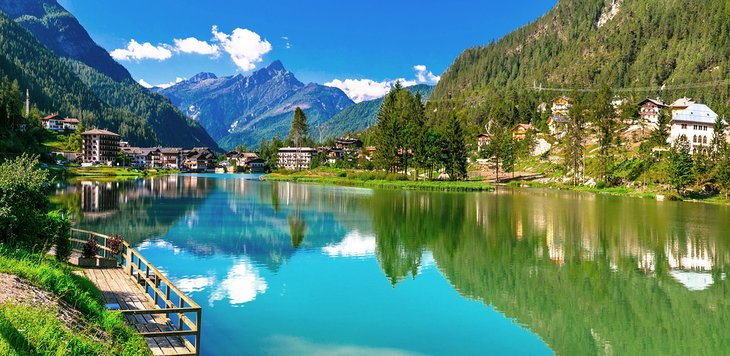
The beautiful green waters of Lago di Alleghe reflect the village of Alleghe and Monte Civetta, deep in northern Italy's Dolomites. Along with swimming, the most popular things to do here are sailing, windsurfing and fishing, or you can rent a pedalo in Alleghe. In the winter, one end of the lake becomes an ice arena.
A path around the lake is smoothed for easy walking, and the views are spectacular from any point along the shore. For more mountain views, ride the funicular to reach the high Alpine meadows above.
This beautiful lake and town have a sad history: the lake was formed by a massive landslide in 1771 that blocked the flow of a mountain stream and destroyed three villages. The water filled the valley, creating the Alpine lake that tourists enjoy today.
13. Lake Vico
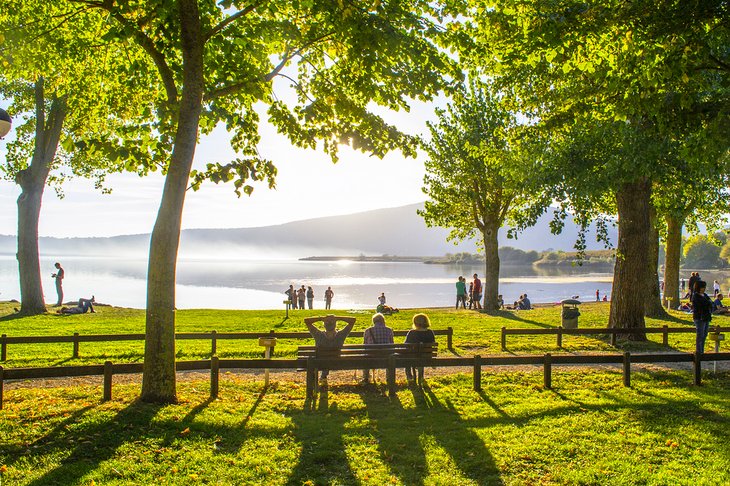
Near Viterbo, and within easy reach of Rome, Lake Vico fills the caldera of an ancient volcano, and its northern shore is protected by a nature reserve. Some of Europe's southernmost beech forests extend up the slopes of the neighboring Cimini Hills, a group of mountains reaching an altitude of nearly 1,000 meters. The lake itself is at 510 meters, one of the highest in Italy.
The forests, where some of the trees reach a height of 40 meters, are cited as part of the UNESCO World Heritage list of Primeval Forests of Carpathian Beech.
Although it is only a little over an hour from Rome, its beaches and shoreline are uncrowded and peaceful. Along with swimming in the clear, deep waters, the lake is popular for sailing and fishing; no motorized boats are allowed. Benches, picnic tables and a few restaurants are along the southern side of the lake, and on the northern shore, La Bella Venere hotel is a beach resort overlooking the lake, with family-sized rooms and children's activities.




